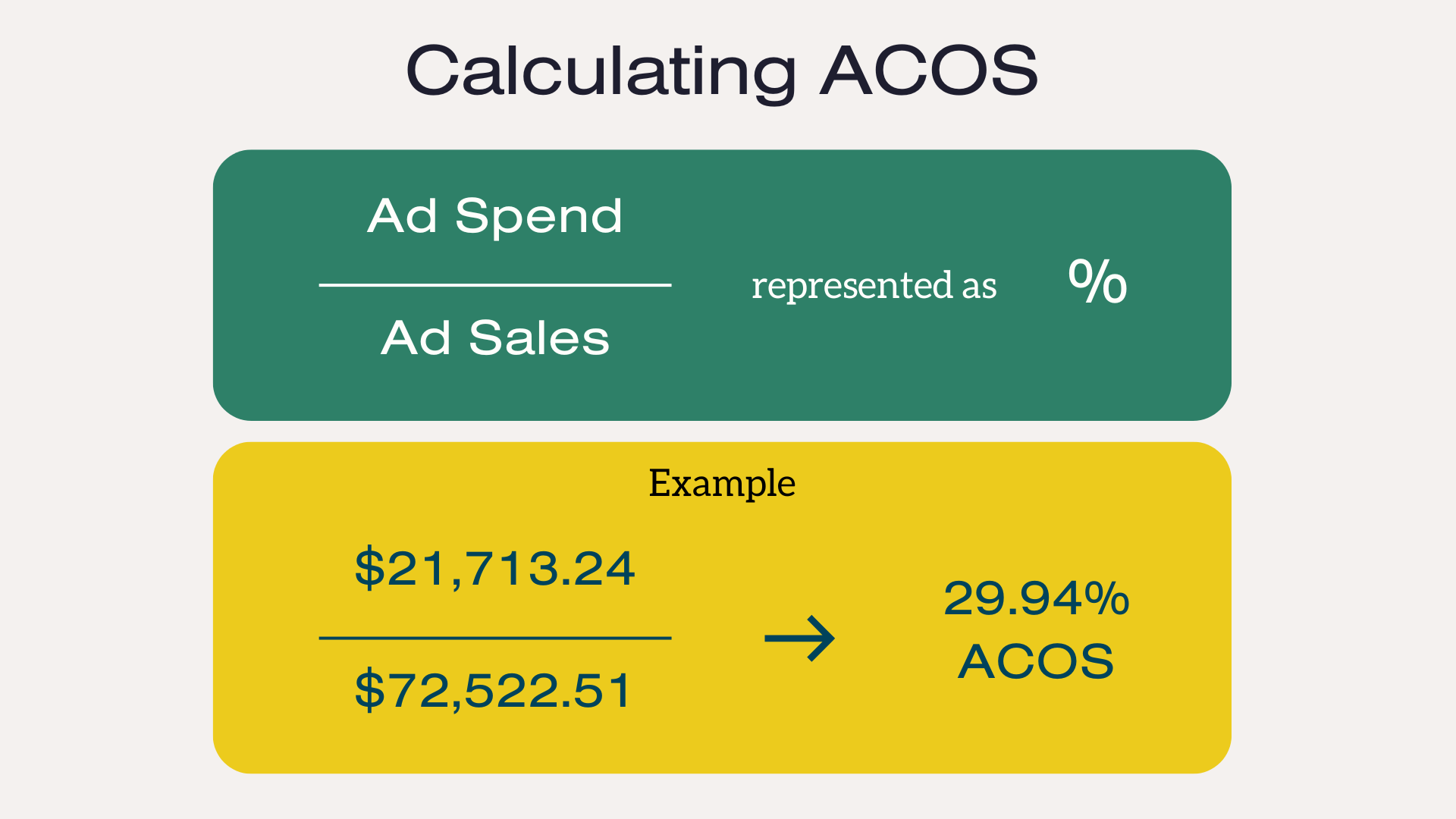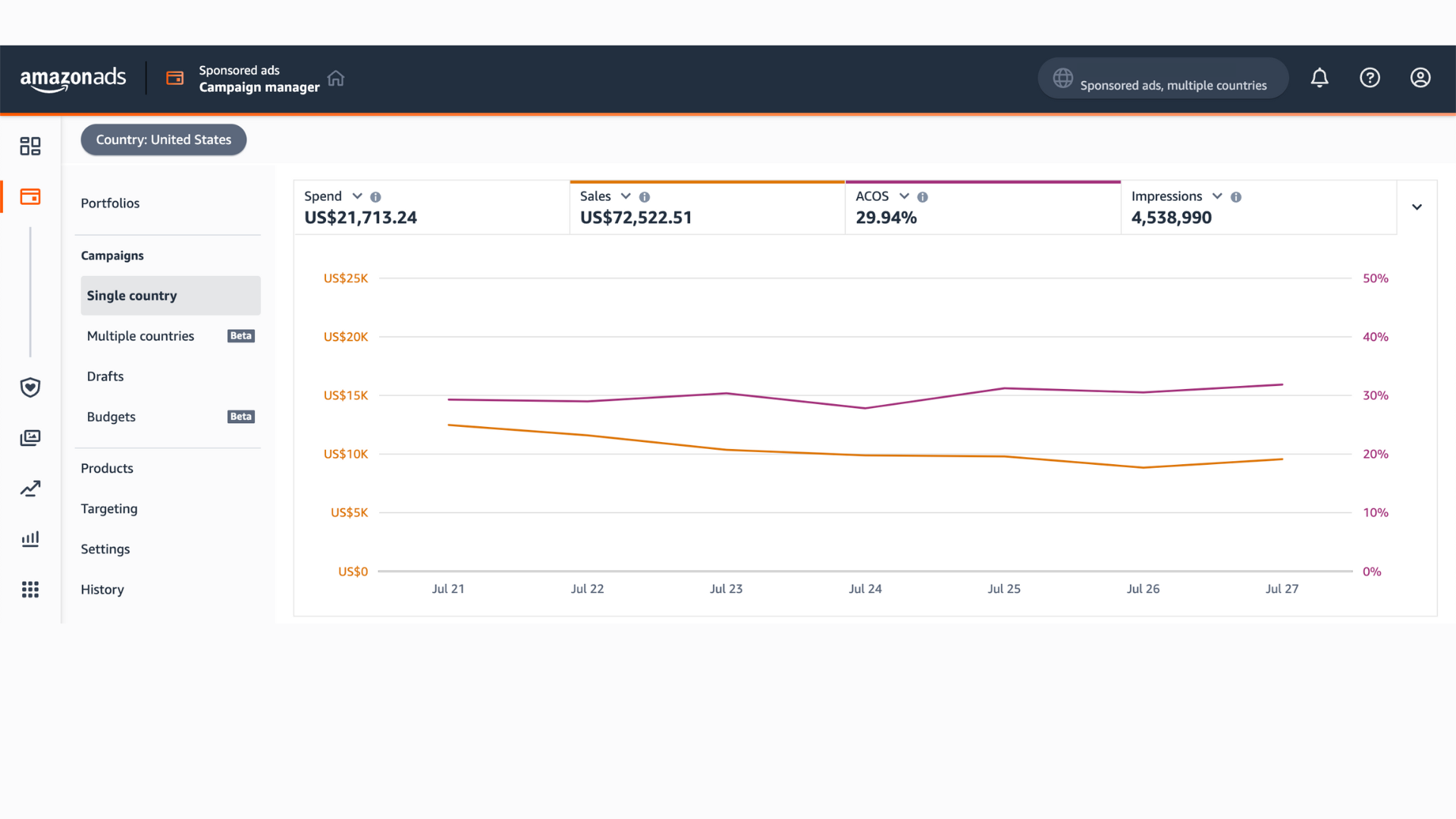If you’ve ever tried to stay in shape, you know how easy it is to obsess over a single number on the scale; weight is often the go-to measure of health, but it is far from the only number that helps to determine how “healthy” we are. The same idea applies to advertising metrics, especially when it comes to ACOS (Advertising Cost of Sale). ACOS is a number that gets obsessed over by brands and marketers alike. It’s the easiest number to point to in determining campaign success or failure. But what makes a good ACOS? Is having a high ACOS really a bad thing? Should we really all be striving to wrangle the metric down as low as possible? Or does it serve a different purpose depending on your advertising strategy? In this article, we’ll break down what influences ACOS and how to determine whether yours is in a “healthy” range for your specific business goals.
What is ACOS?
Weight is only one aspect of health, as ACOS is just one piece of a bigger puzzle. ACOS lets you know how much you’re spending on advertising compared to the revenue you’re bringing in. It is calculated by Ad Spend/Ad Sales, represented as a percentage.
A lower ACOS means your ads are more cost-effective, while a higher ACOS means you’re spending more to generate sales. But here’s the catch: a high ACOS isn’t inherently terrible. It all depends on your business objectives. Are you looking to grow your business through marketing or simply hold your current market share? Your marketing efforts and ACOS goal should align with your overarching goals as a brand.
What Causes High ACOS?
There are plenty of reasons why ACOS might be high, and not all of them are negative. Aggressive bidding on high-traffic generic or competitive keywords can quickly drive up costs, especially if targeting high-value keywords. Catalog challenges, such as low inventory, poorly optimized product pages, or bad reviews can also contribute to high ACOS via decreased conversion rates. Lastly, launching a new product can often result in higher ACOS since the goal is visibility, not immediate profitability.
Inefficiencies in targeting can also play a role, leading to unnecessary spending on the wrong audience or keywords. If we go back to the health analogy, a high ACOS is like seeing additional pounds when getting on the scale. Sometimes, it’s because you’re bulking up and building muscle (a strategic move), and other times it’s because of poor eating habits (an inefficient campaign). A brand that desires to grow their business but refuses to tolerate a high ACOS is akin to someone wanting to get stronger but refuses to pick up anything heavier than a 2lb weight.
What Causes Low ACOS?
On the flip side, a low ACOS can seem like the holy grail, but it has its own trade-offs. Highly optimized campaigns with fine-tuned targeting can focus on high-converting, low-competition keywords to achieve a low ACOS. Mature campaigns with steady sales, strong organic ranking, and repeat customers often see lower ACOS because they don’t have to spend as much to convert shoppers.
Narrow targeting helps control costs but can also limit reach and stunt long-term growth. If your brand has small margins and is in an increasingly competitive market, lean and efficient is the best way to go. This approach is like that of a lightweight marathon runner. You need to cut the proverbial “fat” from your campaigns to ensure you can make it to the finish line. However, new innovations and frequent changes to ecommerce platforms can turn what you thought was a marathon into a triathlon. Your competition will leave you in the dust if your strategy is only focused on one aspect of the race.
How to Approach ACOS in Marketing
Just as there’s no one-size-fits-all target weight, there’s no universal “right” ACOS. What matters is how ACOS fits into your current catalog of products and overall business strategy. Your first day of strength training is going to leave you sore, just as growth-focused strategies come with high ACOS when launching a product or capturing market share. Evaluating the full picture is crucial; ACOS shouldn’t be looked at in isolation.
If you’re gaining weight from strength training but your body fat percentage is staying the same or decreasing, you know that you are headed in the right direction. Conversion rate, new-to-brand sales (NTB), share of voice (SOV), and Total ACOS (T-ACOS) are ideal metrics to pair with ACOS to get a better understanding of how marketing is progressing your brand towards its goal.
The Importance of Brand Recognition
Brand recognition plays a role as well, with established brands often seeing lower ACOS due to strong organic sales. An aggressive approach from the Coca-Cola’s of the world are going to look a lot different from a new company joining marketplaces like Amazon or Walmart for the first time (Shaquile O’Neal is going to have an easier time lifting that 25lb dumbbell than Joey Bagadonuts at the beginning of a new year’s resolution).
How Catalog Affects ACOS
Additionally, the catalog being marketed needs to be able to handle the influx of page views that the marketing efforts will bring. Good reviews, strong product detail pages, and healthy inventory levels all have huge impacts on ACOS. In our analogy, consider that no one can be expected to lose weight running if they have a sprained ankle.
Conclusion
At the end of the day, ACOS is just one piece of the puzzle. It’s one of, if not the most important advertising KPI, but it’s not the only factor that determines marketplace success. What really matters is the bigger picture—how ACOS fits into your overall goals, market conditions, and other key performance metrics. Health isn’t about hitting a specific weight, and advertising success isn’t just about lowering ACOS – it’s about understanding what factors are driving the number and making sure they align with your overall marketplace strategy. If you need help figuring out the right ACOS for your brand, the team at Brandwoven specializes in ecommerce strategy and marketplace advertising. Let’s connect and build an advertising strategy that gets your brand in shape.


